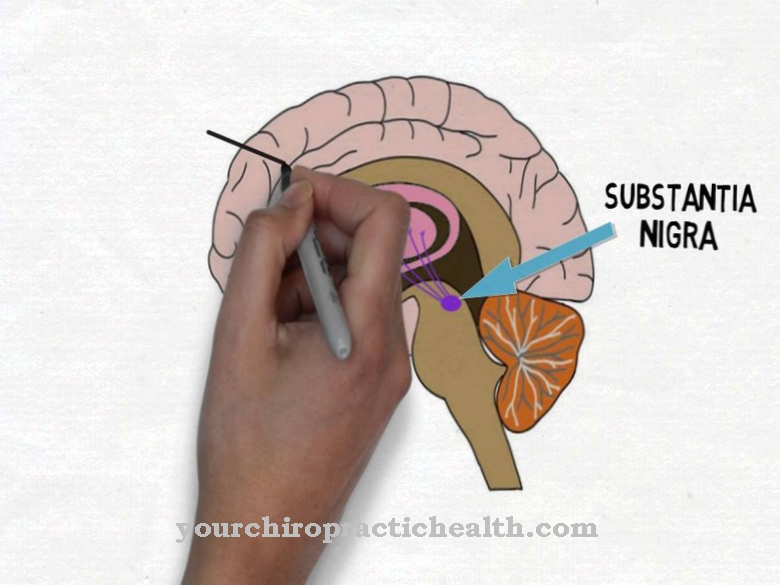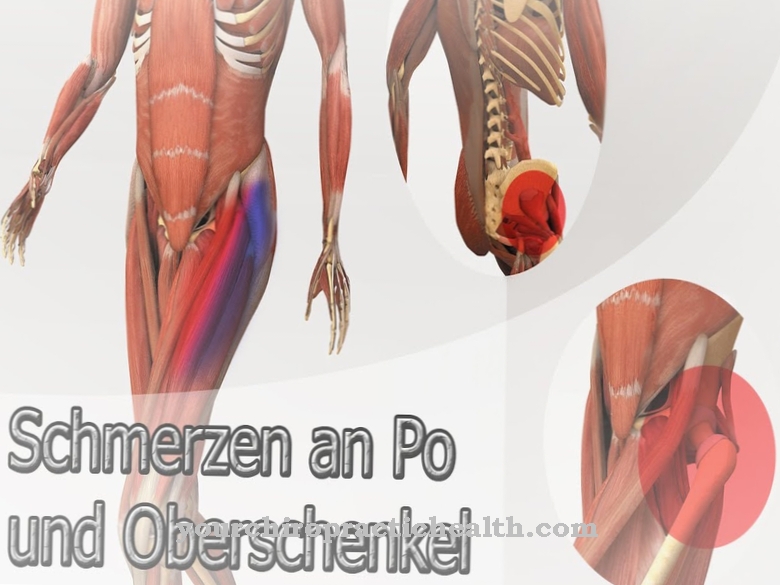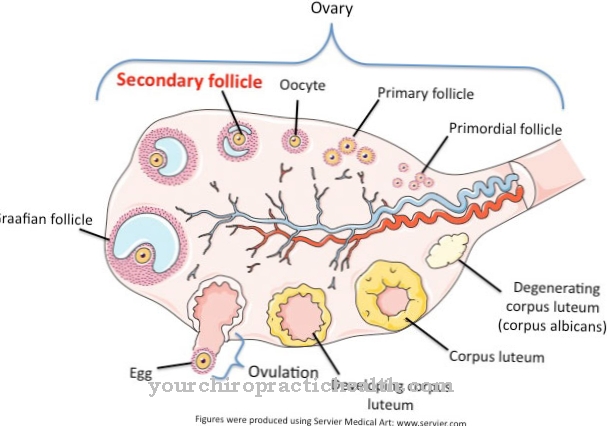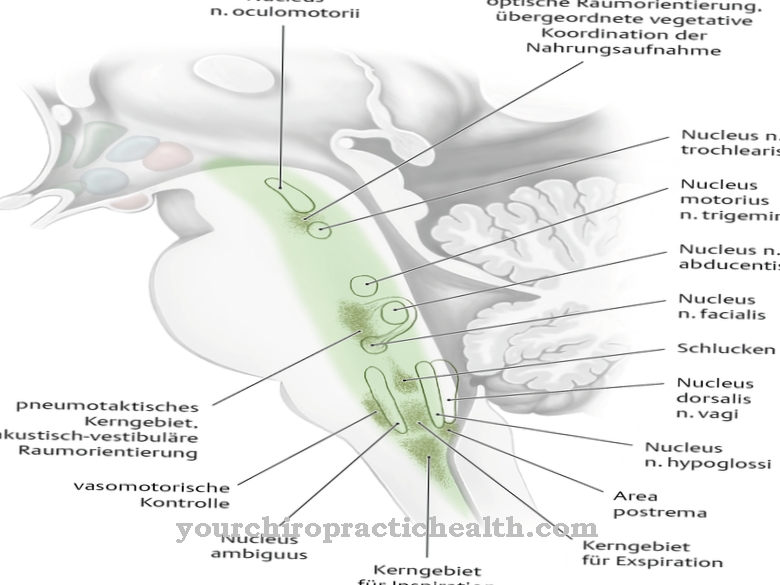Of the Central channel or Central canal is a tubular structure that runs through the spinal cord and extends into the elongated medulla (medulla oblongata). Errors in embryonic development can result in neural tube defects; an example of this is anencephaly. In addition, tumors can develop from the ependyma of the central canal.
What is the central channel?
The central canal (Canalis centralis) is an anatomical structure that belongs to the spinal cord and extends into the elongated spinal cord (medulla oblongata). The central channel is clearly visible there as a protruding tube. It belongs to the internal liquor space, to which the cerebral ventricles also belong.
The central canal is located in the gray matter of the spinal cord. It owes its name to its grayish color, which separates the gray matter from the white matter. The latter mainly contains isolated nerve fibers, while the gray matter consists mainly of nerve cell bodies. These tissue names apply to both the spinal cord and the brain. Together, these two anatomical structures form the central nervous system; the medulla oblongata, which contains the uppermost part of the central canal, belongs to the brain and represents the transition from the spinal cord to the brain stem.
Anatomy & structure
The inside of the central canal is filled with a fluid known as cerebrospinal fluid. The substance is also found in the inner and outer cerebrospinal fluid spaces of the brain and consists mainly of water. There are only a few cells and proteins in the cerebrospinal fluid.
The proteins found in CSF include albumin (human albumin) and beta trace protein. Most of the cells in the cerebrospinal fluid are white blood cells or leukocytes, which are part of the human immune system and can also be found in the blood. Glial cells are responsible for the production of cerebrospinal fluid, which form clusters to form the choroid plexus.
At the head there is a connection between the central canal and the cerebral ventricles, which are part of the internal cerebrospinal fluid spaces of the brain. In some people, the lower end of the central canal merges into the terminal ventriculus, but this thickening of the canal is of no functional significance and usually regresses during embryonic development. The terminal ventriculus is just an evolutionary remnant (rudiment).
Function & tasks
A single layer of ependyma, which consists of glial cells, extends over the walls of the central canal. Biology counts them as a subtype of neuroglial cells. Outside of the central canal is the substantia gelatinosa centralis, in which there are numerous glial cells.
On the outside of their membrane, the ependymal cells have two functionally important structures: the microvilli and the kinocilia. The microvilli are protuberances from the cell and reach a length of 1–4 µm and an average width of 0.08 µm. They serve to increase the surface area of the ependymal cells. The cinema cilia are also protuberances from the cell - however, they are somewhat larger and can be 10 µm long and 0.25 µm wide. With the help of the cinema cilia, the glial cells can move the cerebrospinal fluid and thus actively contribute to its transport. The ependyma also contains glycoproteins that are important for the function of long-term memory.
The central canal arises from the hollow interior (lumen) of the neural tube, which forms during the embryonic development of a person within the first four weeks. Then the two openings of the neural tube close at the top and bottom, and disturbances can lead to the development of neural tube defects.
Diseases
Neural tube defects are pathological conditions that form during embryonic development when the neural tube does not close properly. A severe form of neural tube defects is anencephaly; Even with live-born children, the survival time is usually only a few hours, even if intensive medical care is ensured.
The reason for this lies in the missing parts of the brain that do not develop in the context of anencephaly. Anencephaly is therefore an indication for an abortion, but the mother of the child can also choose to carry the child to term. Psychological support for the mother is often useful in order to process the process emotionally. Physically, anencephaly in the unborn child does not usually pose a threat to the pregnant woman.
In addition, tumors known as ependymomas can develop from the ependyma. The new formations arise from uncontrolled cell growth in the tissue layer and often appear as elongated structures that resemble the shape of a pencil. The ependymoma is surrounded by a capsule. Which treatment options are possible depends on the individual case; In principle, surgical interventions and radiation therapy to combat the tumor come into consideration.
Inflammation of the ependyma is also possible. Such ependymitis can occur as a result of an infectious disease; Possible causes include syphilis, a sexually transmitted disease with possible neurological disorders, and toxoplasmosis. The latter is an infectious disease that goes back to the parasite infestation with Toxoplasma gondii. The disease primarily affects cats, but can also spread from these to humans. In a healthy person, the majority of those affected will not have any visible or noticeable symptoms. However, other inflammations can also occur, for example in the meninges or in the lungs, particularly if the immune system is also weak.












.jpg)



.jpg)










.jpg)
